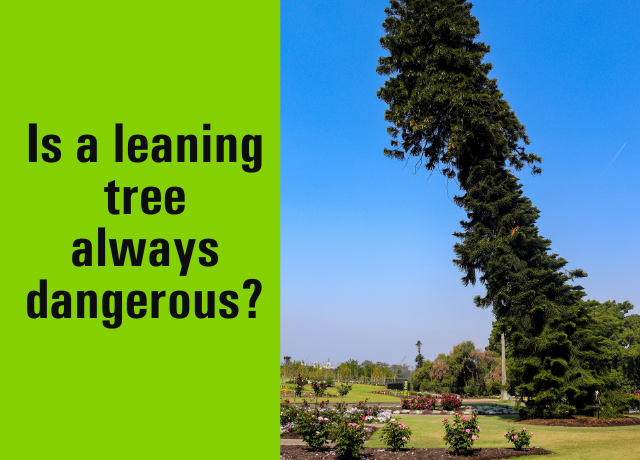
Is a leaning tree always dangerous?
Often people assume that a leaning tree poses a danger to the safety of their house or their family and therefore the tree needs be removed.
However not all leaning trees are imminently dangerous and there are a few key things we look for when making an assessment of a leaning tree and its stability and safety, or the probability of failure.
They include evidence of compression and tension of the bark. Does one side of the tree have rougher bark than the other which may be much smoother by comparison? This occurs as the bark is stretched on one side and bunched on the other, indicating that the tree is responding over time to slow and gradual forces in the direction of lean.
Are the roots showing cellular changes for added strengthening? A tree that has been on a lean for some time, often for many years may respond by laying down strengthening cells to stabilize the tree. A bit like laying down muscle for a body builder. This could indicate the tree is coping well with the lean.
Is there evidence of ground heave? When the earth around the tree begins to lift it is a sure sign the tree may be unstable and is not coping with the lean. This often happens in unusually strong winds and storms esp. where the earth is water logged.
Is the lean a result of phototropic growth, (towards light)? A tree that has naturally grown on a lean to access light needed for photosynthesis may have made provision in the roots for this type of growth. Although not necessarily dangerous this type of growth and the stability can be compromised as the tree gets bigger and limbs get heavier.
As experienced Arborists with International Tree Risk Assessment Qualifications (TRAQ), we can advise you on how safe your tree is by using a matrix system to assess a probable or possible outcome. This means you can make an informed decision on the fate of your leaning tree.